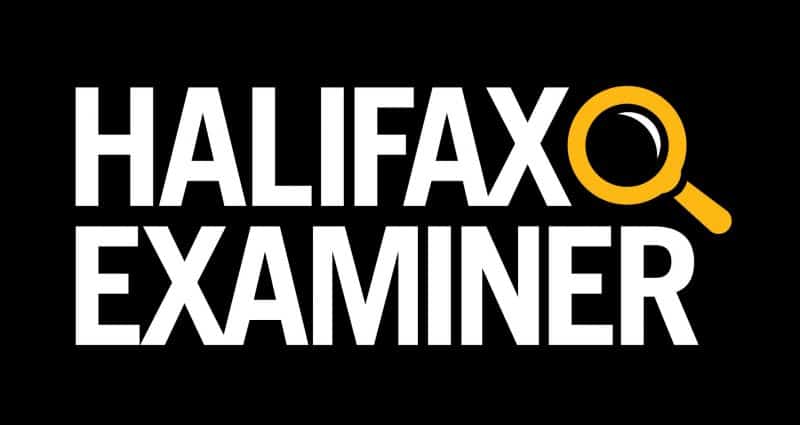It’s easy to understand why the government’s school-opening plan is still more hope than certainty. What’s less easy to understand — or forgive — is its business-as-usual secrecy, which has created unnecessary anxiety among students, parents, teachers and business.

It’s hard not to sympathize with those charged with deciding whether and how to re-start the province’s public schools. There are the many known unknowns, of course, but there are also too many unknown unknowns, not to mention — or forget — all the unthinkable un-imaginables this pandemic could yet throw our way.
So, when a beleaguered Education Minister Zach Churchill pre-announced, following last week’s cabinet meeting:
Our plan is basically to get students back to school at 100 per cent capacity with full curriculum. We know that’s where they are going to do their best. It’s best for families as well and for the teaching and learning environment…
… you knew his words came larded with caveats. Witness his next words:
Of course, we do have to be responsive to any developing situation with COVID-19. So we do have some fallback positions — either at 50 per cent capacity or all the way down to zero — if the situation necessitates that from a public health perspective.
So, what we have, at the end of the day, is legitimately, understandably, entirely… aspirational.
If we can open, we will; if we can’t, we won’t.
Churchill, or his Muppet-master, Premier Stephen McNeil, could have said exactly the same thing way back on May 8, 2020, when McNeil and Dr. Robert Strang, the province’s chief medical officer of health, officially announced that the 2019-20 school year would end on June 5, and that the province’s re-opening plan was “under development.”
“No decisions have been made,” explained the ever-explaining Strang at the time. “We are working on a reopening plan that balances public safety with the need to increase economic and social activity.”
The problem for the rest of us is what happened — and what didn’t happen, and/or wasn’t said — in that yawning gap between May 8 and this coming Wednesday, July 22, when, as Churchill now promises, “details of what [the government’s plan] will look like will be available.”
Given that yawning, two-and-a-half-month gap, citizens’ concerns, frustrations and anger legitimately and understandably bubbled to the surface.
That’s because the short-term future of public education is not just central for children and their parents. Public schooling is also the linchpin for our entire economy. If children can’t go to school, many parents will not be able to find reasonable, affordable childcare, so they won’t be able to return to work. And those who can work from home will almost certainly be stressed and distracted.
No wonder business has vented its frustrations. Patrick Sullivan, the president of the Halifax Chamber of Commerce and chair of the Nova Scotia Business Labour Economic Coalition, which claims to represent 10,000 organizations with 200,000 employees, said the lack of planning for what to do with public schools was a top-of-mind concern for companies trying to get back to business themselves.
He had questions. Will school buses carry a full load? Fifteen students? How many students to a classroom? “There’s so much to do and so little time,” he lamented to the subscription-based business news site allnovascotia.com. “We understand that they’re working on it, but the reality is we need [information] sooner than later.”
More than 100 parents from across the province also sent an open letter to Premier Stephen McNeil on July 12 — two months after the announcement of the end of the last school year and two months before the start (or not) of the next one — complaining about what they described as a “failure to put children and their right to an education squarely at the centre of Nova Scotia’s pandemic response… If you want Nova Scotia’s economy to survive and recover from the pandemic,” they wrote, “you will need us, and all the other working parents — and we need schools.” The parents then raised some issues the government should have been — but wasn’t — discussing publicly.
We believe the return to school requires both innovative policy and a major infusion of resources — to acquire and repurpose space; to employ more teachers and staff and others who can act as academic coaches when children can’t be in the classroom, provide new levels of cleaning and other COVID-specific roles such as taking temperatures; to equip all teachers with a technological device that has standard, supported software that ensures they can deliver remote learning; and to ensure every student has a device that allows them to learn remotely if it is necessary. These are significant costs and we want to know how your government intends to fund them.
What accommodations will be made for teachers and students who cannot risk a return to the classroom as long as Covid-19 exposure remains a risk? What extra support will be provided for the many children (we are told that provincially it is as many as 40 per cent) who could not complete the online learning provided for the last third of last year, and who will now be significantly behind? What threshold will you use to trigger a change from at-school to remote learning? How will teachers and parents be supported?
The parents ended with a stern reminder of the sort even this government registers:
These are critical questions and we need them answered — today, not in three weeks. We are parents, and also voters, and if your government continues to put our children last, in its response to Covid-19, we will not forget.
So the government registered — and responded — with Churchill telling us, during a scrum two weeks ago, what we already could have guessed, which was that the province was considering three options: full opening, partial opening, online only. And then last Friday, he told us the government preferred — again no surprise — Door Number 1.
Details still to come.
Wednesday.
Maybe.
While the government has undoubtedly been “working on” reopening plans, hopes and dreams, it continues to operate — as is all too usual with this government — on radio silence, deploying its best inside-the-dome, you-don’t-need-to-know-this, Father-Always-Knows-Best secrecy.
In June, for example, the government sent out a survey to parents, guardians and teachers — “our partners in learning” — asking them about their experiences with online learning “so that we can learn more about what worked well and identify those opportunities where we can improve.”
Last week, Churchill bragged the department had received more than 22,000 responses. But, so far, he hasn’t shared the results with parents, teachers or the public, so we too can have a better sense of what worked, and what can be improved.
Hopefully, we’ll get to see the results on Wednesday as part of Churchill’s “details” of what our public-school future might look like. But we shouldn’t be finding this out when it’s too late; those results should have been available as they were compiled in order to help inform a larger public discussion about the issues and options.
Churchill also claimed his department had developed its plan in consultation with other groups, including the IWK, the department of public health and the Nova Scotia Teachers’ Union.

Which is… interesting.
Paul Wozney, the president of the NSTU, told the CBC last week the first information even about the options under consideration “came from the minister’s scrum two weeks ago.”
Wozney also said teachers were not directly consulted about the results of the survey — the one Churchill said was “very informative” in developing the government’s plan. Any comments from teachers to the province, Wozney added, had all been funneled through their school’s principal. “In terms of data collection,” he said, “any time you add a third party who was a filter for what people mean… it can really skew your results.”
So…
It’s easy to understand why the government’s school-opening plan is still more hope than certainty. What’s less easy to understand — or forgive — is its business-as-usual secrecy, which continues to create even more anxiety for students, parents, teachers and business.
A version of this column originally appeared in the Halifax Examiner.
To read the latest column, please subscribe.







 STEPHEN KIMBER, a Professor of Journalism at the University of King's College in Halifax and co-founder of its MFA in Creative Nonfiction Program, is an award-winning writer, editor and broadcaster. He is the author of two novels and eight non-fiction books. Buy his books
STEPHEN KIMBER, a Professor of Journalism at the University of King's College in Halifax and co-founder of its MFA in Creative Nonfiction Program, is an award-winning writer, editor and broadcaster. He is the author of two novels and eight non-fiction books. Buy his books